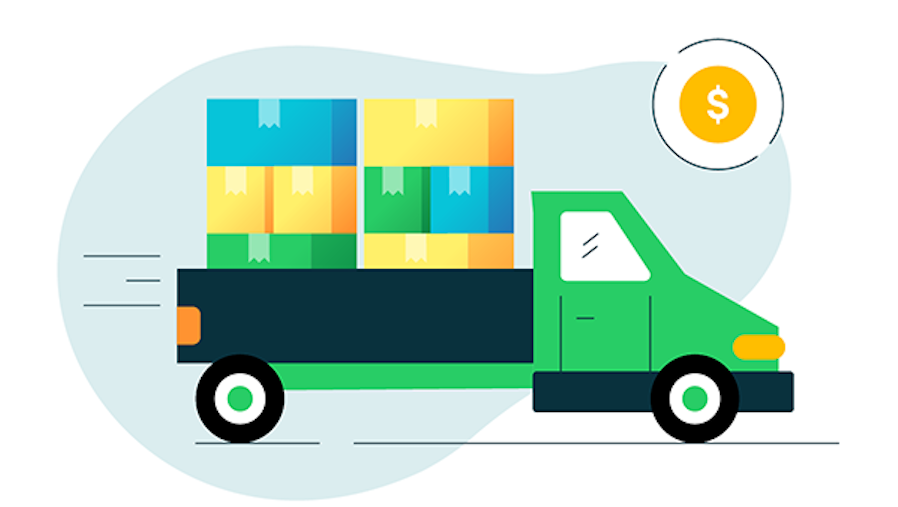For businesses, particularly distributors and wholesalers, setting a minimum order quantity (MOQ) ensures each sale generates enough profit to cover costs. For customers, purchasing products at the MOQ is an investment. Customers get greater transparency and discounted per-unit pricing in exchange for a larger order volume.

How to use minimum order quantity to protect your margins
What is minimum order quantity?
An MOQ is the smallest amount of a product a supplier requires customers to purchase in a single order.
MOQs are common among distributors and wholesalers, resulting in increased order sizes and protected margins. The exact minimum amount of product varies according to supplier, product, or style; and is typically set as a number of units or a dollar order value.
Let’s look at a few MOQ examples:
- A furniture wholesaler sells classroom desks for $100 each, with an MOQ of $1,000 (or 10 desks) per order.
- A distributor sells cases of bottled water, with 24 bottles of water per case. Each case costs $5 and there’s an MOQ of 84 cases.
Benefits of MOQs for wholesalers
Almost all businesses prefer receiving large orders as compared to smaller ones. This is especially true for distributors and wholesalers, which typically work with slimmer margins.
By setting MOQs and only handling high-volume orders, these businesses can cover costs, manage cash flow, and maintain margins. Here are some of the critical benefits of MOQs.
1. Attracts serious customers
MOQs are an excellent way to filter out customers who aren’t yet ready to commit to a large purchase order. Maybe they’re looking for low-cost options or want to try the product first. In these cases, they’re a better fit for purchasing your products from a retailer.
Customers who readily agree to MOQs are confident in their ability to sell and succeed with your product. They see the value of their investment and are more likely to become long-term customers.
2. Improves inventory turnover
Suppliers can use MOQs not just to maximize profits but also to optimize inventory turnover and warehouse space.
Inventory carrying costs are a significant expense for distributors and wholesalers. Selling large quantities is also an excellent way to move inventory and increase turnover. The faster the inventory is sold, the lower the per-unit carrying cost.
Over time, suppliers can forecast customer demand throughout the year and optimize inventory orders based on historical sales.
3. Increases profit margins and cash flow
It can be uneconomical for businesses to accept orders below a certain quantity, especially for distributors and wholesalers. Processing small orders can be a money-losing proposition. Setting MOQs can be a cost-effective way to increase order volumes and reach economies of scale.
Economies of scale are cost advantages that come with an increase in production. With costs spread over more products, suppliers see a lower per-unit cost and a healthier margin.
4. Streamlines procurement
Suppliers can likewise purchase their raw materials and supplies in bulk by dealing with high-volume orders. They can streamline shipments and deliveries, and even set MOQs to optimize their production or inventory levels.
For example, MOQ requirements can be set to meet the supplier’s smallest production run. Or if their products are already in cases of 12 or 24, their MOQ can be a multiple of those numbers to prevent spending on repackaging or leaving stray products in inventory.
When setting a MOQ might not be a good idea
Requiring customers to meet MOQs can also pose challenges to generating adequate sales. Here are a few cases where MOQs may not be a good idea.
You can’t afford to refuse customers
If the business is not yet established or is entering new markets, it’s advisable not to pose too many restrictions on potential customers. As long as you qualify leads and are still making a profit, the experience and benefits of establishing relationships outweigh higher margins at the start.
MOQs are not standard practice in your industry
Take a look at your competitors and similar suppliers. Do they have MOQs? Some industries, such as more expensive luxury items, don’t require customers to meet MOQs. Setting MOQs in these cases may end up pricing you out of the market.
You run the risk of losing customers
Even if you're established in the market and MOQs are common in your industry, existing customers may need help adjusting to an increased order amount. Plus, if the MOQ is much higher than typical orders, you risk losing loyal customers.
Best practices for setting minimum order quantity
If you think MOQs are aligned with your business, here are some best practices to keep in mind as you implement them.
1. Assign each product its own MOQ
Every item comes with its own production costs, so a blanket MOQ may not achieve your target profit margin or be too high for more expensive products.
While there’s no set formula to calculate a product’s MOQ, it’s important to consider the following:
- Demand: Look at the product type, seasonality, market competition, and any historical sales data. Also factor in the production and delivery times needed to meet the demand.
- Break-even point: The minimum number of units that must be sold to recover costs.
- Carrying costs: The price you pay for storing the products and other inventory costs that accrue before they’re sold. Carrying costs depend on the product type and any special requirements, like temperature-sensitive or hazardous materials.
QuickBooks Enterprise helps you identify the true cost of your products with its landed cost functionality, which factors in costs like freight, taxes, and insurance. All of these cost factors can be automated into your accounting, which will provide you with a total product cost so you can protect your profit margins.
2. Base your MOQ on historical data
To lessen the risk of losing customers, look to the size of your average orders and set an MOQ within that range. This accommodates your existing customers while also helping to set fair MOQs for incoming orders.
Your team can automatically update prices in QuickBooks Enterprise to maintain the markup for profitability as costs change. Set custom pricing rules as well, with quantity discounts to incentivize customers to increase orders past your MOQ.
3. Review your terms and conditions
While MOQs generate a favorable profit margin, large orders can also lead to an increase in the cost of returns. Some customers may have difficulty selling within a reasonable time frame and request to return the unsold products. After setting any new MOQs, review your return policy and other terms and conditions.
4. Focus on customer relations
Products with MOQs are expected to bring in fewer but larger and higher-value orders. The customers you attract value your products. Provide them with great support and service and reap the benefits of long-term customer relationships.
How MOQs affect inventory management strategy
By setting MOQs, a supplier controls the minimum amount of product that leaves the warehouse with every sale. Therefore, the selected MOQ will naturally play a role in inventory turnover, forecasting, and overall inventory management.
High MOQs, for example, will increase profits and turnover rates but can also create large fluctuations in on-hand inventory. A few orders can leave a supplier with low stocks and unable to fill further orders.
To buffer against these situations, suppliers must reassess their supply chain and hold more safety stock to fulfill higher MOQs.
More inventory also carries a greater risk if left unsold as dead stock, especially for seasonal, trendy, or perishable products.
Low MOQs won’t create significant inventory fluctuations. And if a supplier can align their production with inventory replenishment flows, a lower MOQ will reduce the need for larger upfront purchases, facilities, and utility costs.
No matter what MOQ you decide on, looking at past inventory turnover and overall industry trends is essential. Forecast how much product you need to satisfy the demand for a given period and determine the required lead times to replenish inventory.
All these factors will help to optimize your distribution or wholesale business and maximize long-term profit.
The difference between MOQ vs. EOQ
MOQ and EOQ, or economic order quantity, are two different quantities that affect a supplier’s inventory levels.
Whereas MOQs are the smallest order size accepted by suppliers, EOQs are the ideal number of products a supplier should order to minimize costs and still meet customer demand.
EOQ primarily looks at annual demand or sales forecasts, order costs, and holding costs. EOQ protects against over-buying and frees up cash flow for other business needs, but assumes demand, order costs, and holding costs remain constant, which may not always be the case. It also doesn’t factor in shipping costs or any quantity discounts.
Final Thoughts
Distributors, wholesalers, and other suppliers typically have to defend their profit margins and MOQs are an accepted practice to ensure these businesses attract serious customers and maintain profitability in the long run by achieving economies of scale.
While there’s no set formula to calculate the ideal MOQ for a product, establishing MOQs helps wholesale and distributor businesses account for the costs required to produce and transport products, align with consumer demand forecasts, and protect the minimum profit margins needed to cover costs.
Whether you decide to set MOQs for some or all of your products, you must be aware of the minimum purchase and margins you need to remain profitable.










